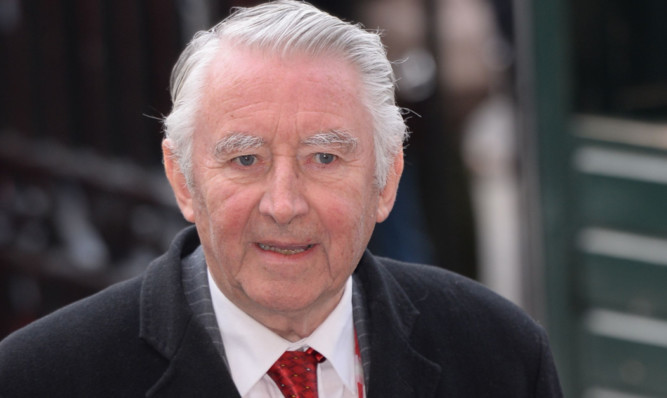
Sir David Steel is the man in the know.
Sir David Steel has revealed both David Cameron and Ed Miliband have sought his advice about running a minority Government.
In an exclusive interview with The Sunday Post, the Lib Dem peer said he had held talks with the two party leaders about the prospect of no party winning overall control following the General Election.
Sir David led the Liberal Party in a pact with Labour during the last period of minority Government in the 1970s. He said: “I’ve had chats with both Cameron and Miliband. And one or two of the other SNP people as well.
“As I’m the only person around who was involved in it I’ve suddenly become the only living expert on the subject.
“There have been conversations going on these last few weeks with all sorts of people, but nothing official.”
And he expects to be in further demand after May 7.
He added: “The politicians all say we’re going to get a majority. Wait and see what happens after the election but I think I might be getting a few phone calls.”
David Steel led the Liberals when they signed up to the so-called Lib-Lab pact that kept Jim Callaghan in power between 1977 and 1978.
That was a “confidence and supply” arrangement that saw the junior partner only guarantee to back the Government on finance bills and confidence motions that would bring it down.
With Labour ruling out a formal coalition with the SNP after May, a “confidence and supply” agreement between the two parties has become one of the most likely outcomes of the election.
Lord Steel predicts no-one will win the May 7 poll.
He said: “If, as I guess, nobody has an overall majority after the election my hunch is there will not be another coalition.
“The Lib Dems as a party have said we’ve had enough of this, we’ve got to rebuild and recharge. The Tories themselves want Cameron to run a Tory Government. If Labour get elected I don’t think there’s any great appetite for a coalition.
“It’s going to be a kaleidoscope parliament, there will be more SNP, there’ll be a few Greens but not many, some Irish, a whole lot of parties.”
Lord Steel now sits in the House of Lords but was previously presiding officer of the Scottish Parliament and this week marks 50 years since he was first elected MP for the Borders. He said: “I’m still a party loyalist but I think terrible mistakes were made at the start of the Coalition for which we’ve paid dearly.
“Tuition fees is the obvious mistake but I’m not going to go into detail because I think this is not the moment.”
When it’s put to him that Nick Clegg can’t survive as Lib Dem leader if the party loses as many as half of its MPs as currently predicted, he added: “You may say that, I couldn’t possibly comment.”

Enjoy the convenience of having The Sunday Post delivered as a digital ePaper straight to your smartphone, tablet or computer.
Subscribe for only £5.49 a month and enjoy all the benefits of the printed paper as a digital replica.
Subscribe